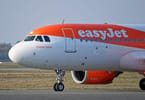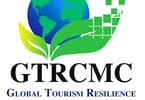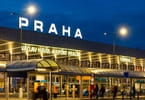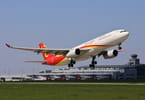“Go there. Best food and safe to eat. You have water? Buy water. Souvenirs that way – silk, nice, nice price. But no pay full price. Bargaining good. I meet you here, two hours. Don’t forget. Here. Okay? Here. I be here.”
The emphasis of “here” was important – the risk of a tourist getting completely lost in the world’s largest weekend market was high, very high. With over five-thousand small, overstuffed, narrowly-interconnected, and almost invisibly numbered stalls, tempting over 200,000 tourists daily, no doubt it had happened to other tourists before.
But Alek, a local tuk-tuk driver, was not about to let it happen again. Not if he could help it.
For sixteen years Alek, a native of Bangkok, has been driving tourists from their air conditioned, quiet hotels, through Bangkok’s increasingly bustling and fume-fragranced streets. A father of three girls, Alek works hard, seven days a week, operating his own tuk-tuk, caring for his family through his care of tourists. Wherever tourists want to go, he can take them. On the way, if they look like they want to talk, he shares small details: for visitors in town on business, even if only a small amount of free time, a visit to the Grand Palace is important. Go early to avoid the heat. Don’t forget to take sleeved shirt. And remember, no shorts or short skirts.
And of course, for tourists wanting to see a local market, there is only one place to go – Chatuchak Market.
Chatuchak Market has a special place in Thailand’s commercial history. The brainchild of the late Prime Minister of Thailand, Field Marshall Plaek Phibunsongkhram, it was during his time of leadership in the 1950s that the idea was seeded for each major town in Thailand to establish a flea market.
To this day, despite its change of name (originally Sanam Luang), locations and formats, the market remains one of Bangkok’s iconic destinations. To see it, and become immersed in it, makes it clear why this massive marketplace sits near the top of the list of “must see” attractions in Thailand. For Alek, the market entrance point – section 18, to be precise – is a regular tourist drop-off/pick-up point. He estimates that he makes at least ten trips a day.
For tourists seeking to get up-close and personal in an easy to access way, local markets are invaluable microcosms of all that the destination has to offer. Stall by stall, whether selling cooked goods or local crafts, few places compare to a local market to immediately, sometimes unforgivably, immerse a visitor in the “here and now.”
And it is not only in Thailand.
THE PRICELESS BUZZ OF MARKET BUSINESS
Whether it is Chatuchak in Bangkok, Janpath in New Delhi, Camden Town in London, or Khan Khalili in Cairo, local markets represent awe-inspiring centers of buzz, great buys, and an unbeatable local showcase. Where better to find, all in one area, a buffet for the tourist, tapping into senses and sentiment, including:
• Tasty temptations, reflecting local spices and sweet sensations, cooked in perfect combinations;
• Touches and textures reflecting local textiles, material treatments, attention to detail, and treasured skills of old-time artisans;
• Trinkets, traditional mementos, and toys – from puppets and papers, to deities and decorative ornaments, and, of course, plenty of sunglasses, incense sticks, and “surprising to find everywhere” standard urban market fare;
• Textiles and tailoring, reflecting everything from boutique local designs to mass manufacturing.
Not to mention the memory-embedding smells, sounds, and smiles, that take over one’s mind, memories, and heart.
What is often invisible to the traveler, however, is the SMME (small/medium/micro enterprise) activity that keeps these local markets humming – hundreds, if not thousands, of small businesses that, through their tourist-targeted activity, are able to earn a living. Doing so, these small business owners are able to create personal wealth that takes care of the needs of their family, their futures. The economic activity stimulated by the hundreds of thousands of tourists streaming through the market stalls represents so much more than simply a tourist attraction – it is a lifeline.
And it is the basis of a community – a collection of people that, every day, come together to not just work for their livelihoods, but share their lives.
A bittersweet, beautiful representation of this market-based community can be found not far from Bangkok, floating on the water channels in Damnoen Saduak. First carved out of 32 km of land as a result of a directive of King Rama IV, today the floating markets represent an age-old form of trade, with local merchants – mainly women – drifting out daily to sell their fresh, seasonal tropical fruit and vegetables. And a bustling tourist attraction. Now, alongside the canals, modern souvenirs – curios and cotton t-shirts, painted silk fans, and fake shiny Rolex watches – can be found in the stalls lining the waterways.
But on the waters are the women, floating along the long-established, traditional trading routes, showing their produce, cooking their special dishes, and chatting. And chatting, and chatting, and chatting. Together, for years and years, they have shared their waterways, their lives. Their faces, while weathered, possess a radiant, elderly grace, the lines around their eyes like storybooks of years of working, sharing, selling, living, on the canal.
Sadly, as they age, as the floating markets turn to more land-based, manufactured, mass outlets, their community, and its characterful floating market culture, is literally dying off. The younger generation has no interest in keeping the tradition alive. Their lives are elsewhere. What a loss it will be for Thailand, its trading history, its traditions, and its tourism offering.
KEEPING MARKET CRAFTS, CULTURES AND ECONOMIES ALIVE
Thankfully, the tourism industry is one that has the ability to provide truly sustainable oxygen to traditional ways, in traditional places. And add a special something to new, more modern forms of travel. Case in point: Germany’s charming Christmas markets.
Established in the 11th century, traditional European Christmas markets – Christkindlmarkt – came to life as street markets held in sweet anticipation of Christmas. With roots in German-speaking Europe, today Christmas markets have become wonderfully-exciting festive season hubs of holiday cheer for locals and visitors to towns stretching across Europe. Local artisans of cuisine and craft come out to show and sell their finest creations, and share in the community spirit of the holidays.
Appreciating the genuine wonder that these traditional markets offer to holidaymakers, Uniworld Boutique River Cruise Collection introduced European Christmas markets into their year-end holiday itineraries.
As expressed by Guy Young, President of the company:
“Christmas in Europe is very much a family-oriented celebration. Our Christmas market cruises give guests an opportunity to learn how Europeans celebrate the spirit of the season, their unique way. The personality of each country shines even more during Christmas because of each country’s special holiday. Our guests may discover the medieval atmosphere of Nuremberg’s main Christmas Market and sample its famous holiday gingerbread. Or they can stroll through Regensburg’s romantic Christmas Market, savoring dumplings with vanilla sauce. In Passau, guests can shop for unique crafts like hand-painted porcelain and Bohemian glass ornaments. While in Cologne guests can enjoy several Christmas Markets and in particular the memorable market which has, as a backdrop, the beautiful Cologne cathedral… And, of course, guests can buy very special and unique gifts for their friends and families back home!”
The value of the Christmas market experience to guests is critical, but Young is aware that the positive impact goes far beyond the traveler.
Young continues:
“By offering Christmas Market visits as part of our itineraries, we are able to directly support the economies of these great traditional towns and communities, from the local food and drink consumed while at the markets, to the souvenirs bought for guests’ families and friends. We also help local economy by featuring Christmas Markets in our brochure and website so our guests can get acquainted with European traditions.”
The magic of markets is in their ability to keep connections strong: past with present, locals with visitors, tourism with local trade.
At the end of the allotted Bangkok market shopping time, feeling weary and all bargained out (yet rather accomplished having bought a bundle of perfectly-chosen gifts to take home), it was time to return to the meeting point Alek had pointed out. As promised, there he was, among a line-up of waiting taxis and tuk-tuks dependent on tourists for their livelihoods. As tempting as the air-conditioned taxi looked, there was something special about the care shown by this local Thai tuk-tuk driver.
Besides, as Alek proudly pointed out while weaving mission-like through lines and lines of unmoving cars as far as the eye could see, “Taxi, traffic. Tuk-tuk, no traffic!”
WHAT TO TAKE AWAY FROM THIS ARTICLE:
- The brainchild of the late Prime Minister of Thailand, Field Marshall Plaek Phibunsongkhram, it was during his time of leadership in the 1950s that the idea was seeded for each major town in Thailand to establish a flea market.
- Stall by stall, whether selling cooked goods or local crafts, few places compare to a local market to immediately, sometimes unforgivably, immerse a visitor in the “here and now.
- The economic activity stimulated by the hundreds of thousands of tourists streaming through the market stalls represents so much more than simply a tourist attraction – it is a lifeline.






















